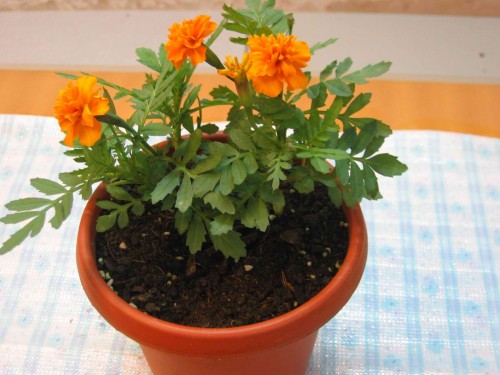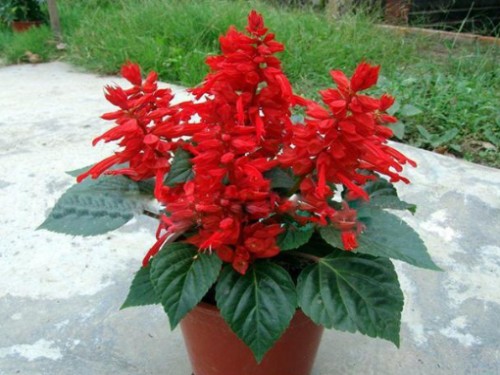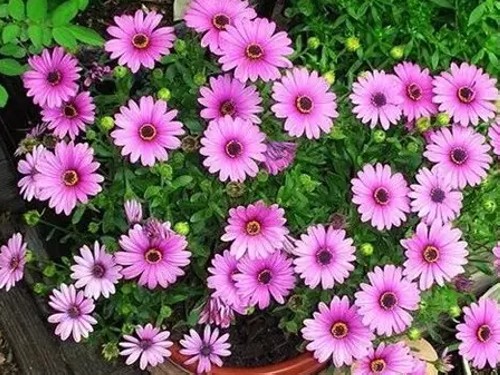Planting methods and matters needing attention of potted malachite
Peacock grass, a nickname for yellow chrysanthemum and satin flowers, generally grows in mountains at higher elevations. When it blossoms, its flowers are colorful and rich, as gorgeous as peacocks, so they are called peacock grass. The common colors of malachite flowers are red, yellow, orange and so on. They can be harvested in summer and autumn and have high medicinal value. At present, peacock grass has gradually become the main flower in flower beds and courtyards.

Peacock grass is an annual herb of Compositae, also known as bayberry chrysanthemum, which likes warm and sunny environment. The growth temperature is 10 ℃ ~ 38 ℃ and the optimum temperature is 15 ℃ ~ 30 ℃. Peacock grass is sensitive to temperature and sunshine length, so it is necessary to avoid direct sunlight and cool down by shading around noon. The key to moisture management is to use a medium with good drainage. Although it is important to keep the medium moist, proper drying before each watering is necessary, and the medium can not be too dry to cause the plant to wither.
1. Soil: the requirement of malachite grass on soil is not very high, as long as the air permeability and drainage performance of soil are ensured.
2. Propagation: the propagation of malachite can be done by sowing and cutting. Sowing takes place from November to March. It blossoms from March to May when sown in winter and spring. Sowing seeds can be broadcast live in the courtyard or in pots. Potted plants can be planted in pots about 1 month after sowing. Cutting propagation can cut about 10 cm of twigs from June to August and cut them directly into the courtyard for shade cover and rapid growth. It can be inserted directly into the flowerpot. Summer and autumn cuttings bloom from August to December. The cuttings can survive regardless of the cutting ground or the cutting bed (basin).
3. Light: Malachite grass is naturally fond of sunlight, but it can blossom when the middle leaves can blossom in semi-overcast environment, and the suitable temperature for seedling growth is about 22 ℃. However, in the summer, some shading measures can be carried out on the peacock grass to prevent the sun from burning the leaves.
4, temperature: when the malachite has seedlings in the pot, the 22 ℃ can be reduced to 18 ℃, and after a few weeks it can be reduced to 15 degrees Celsius. The temperature before and after flowering is generally suitable for 12-14 ℃, and its growth temperature is within 10-30 degrees Celsius. At the same time, the winter temperature should not be lower than 5 ℃, otherwise there will be frostbite.
5, watering: it does not have much requirement for watering, as long as it is dry in the soil, you can try your best to water it, such as water thoroughly.
6. Fertilization: malachite can apply some water and fertilizer appropriately during the growing period, because in the allocation of soil, malachite can add some artificial medium fertilizer as base fertilizer, so water and fertilizer can be carried out every 7-10 days during its growing period, and fertilization can be reduced in winter.
7. Pruning: after cutting for 1 week, the malachite grass can take root on the pot, grow quickly and take shape after cool autumn, and can keep blooming bright flowers.
If you want to have a high germination rate of malachite sowing, you must first ensure that the room temperature is above 18 °and the basin soil is breathable. To ensure that these two points of malachite is easy to survive, I usually sow in the pot, come out and transplant the seedlings to the flower bed.
Matters needing attention in culturing peacock grass:
1. Light regulation
Peacock grass is a positive plant, growth and flowering require sufficient sunlight, sufficient light is also conducive to prevent plant overgrowth. Avoid direct sunlight in the hot season and cool down by shading around noon.
2. Temperature control
The temperature can be reduced by 18 ℃ after potting, to 15 ℃ after a few weeks, and to 12: 14 ℃ before and after flowering. This temperature is ideal for forming a good plant shape, but it may be difficult to achieve this condition in practical production. Therefore, generally speaking, as long as it is more than 5 ℃, it will not be frozen, and it can grow well between 10 ℃ and 30 ℃.
3. Water and fertilizer management
The key to moisture management is to use a medium with good drainage. Although it is important to keep the medium moist, it is necessary to dry properly before each watering. Of course, the medium should not be too dry and cause the plant to wither. For those cultivated completely in artificial medium, it can be fertilized alternately once every 7 to 10 days. When the temperature is low in winter, the use of fertilizer should be reduced. If the medium is ordinary soil, the compound fertilizer can be mixed as base fertilizer before the medium is put into the basin. Fertilizer is applied when the fertility is insufficient.
Time: 2019-05-25 Click:
- Prev

The planting method of potted one-string red
A perennial herb of the genus Labiatae, cultivated only as a flower in 2012. Plant height varies with different varieties, mostly between 30 and 80. A string of red stems is quadrangular and the color is green. Most of the leaves are triangular, and the edges of the leaves have teeth. The flowers are shaped in strings and the Corolla is red
- Next

Planting method of potted blue chrysanthemum
Since the blue demon began to grow flowers, there has been a very good flower friend, recommended blue chrysanthemum to me, said that it is very worth raising a kind of flower, yes, blue chrysanthemum is indeed very lovable, the flower fresh florescence is also very long. However, blue-eye chrysanthemum is a kind of flower that is easy to raise. Let's talk about the planting method of blue-eye chrysanthemum today.
Related
- Fuxing push coffee new agricultural production and marketing class: lack of small-scale processing plants
- Jujube rice field leisure farm deep ploughing Yilan for five years to create a space for organic food and play
- Nongyu Farm-A trial of organic papaya for brave women with advanced technology
- Four points for attention in the prevention and control of diseases and insect pests of edible fungi
- How to add nutrient solution to Edible Fungi
- Is there any good way to control edible fungus mites?
- Open Inoculation Technology of Edible Fungi
- Is there any clever way to use fertilizer for edible fungus in winter?
- What agents are used to kill the pathogens of edible fungi in the mushroom shed?
- Rapid drying of Edible Fungi

